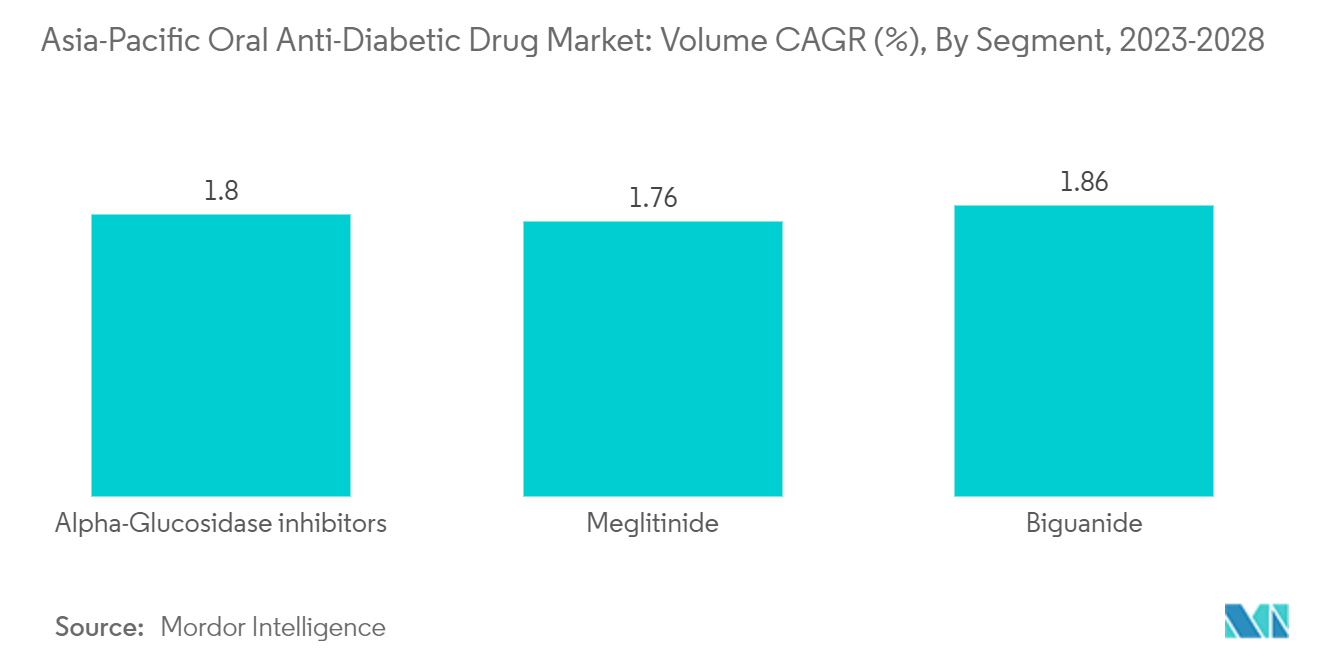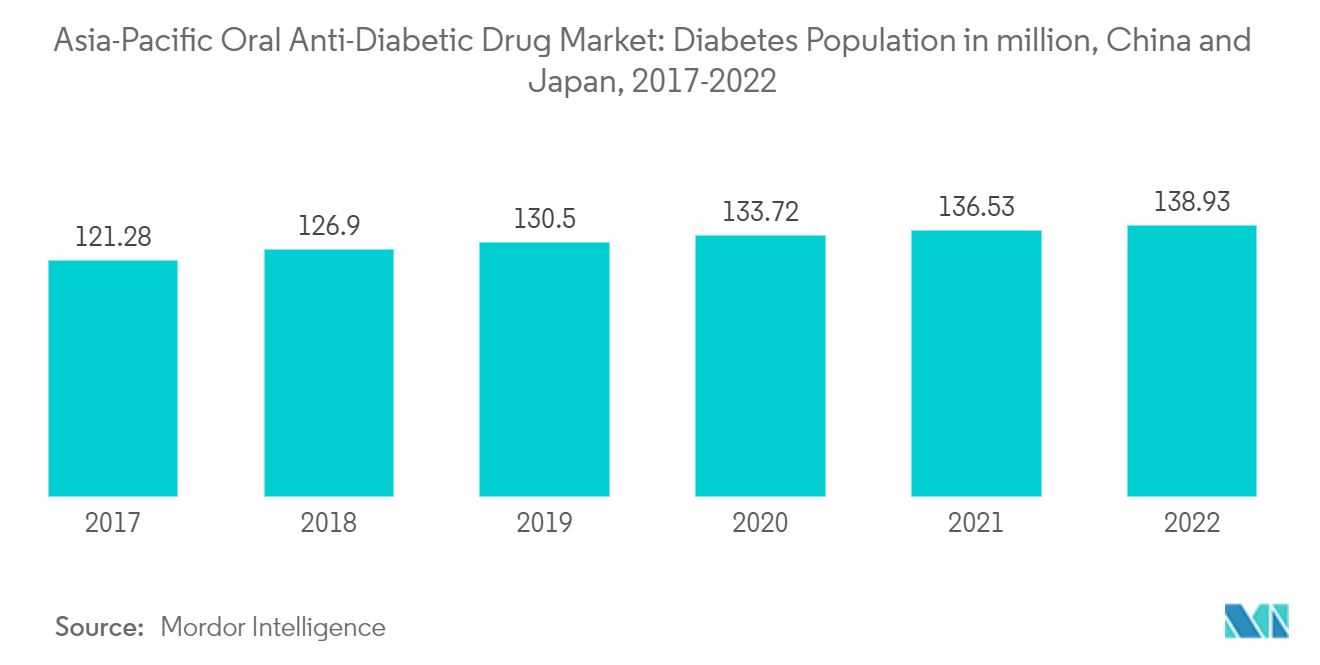Market Trends of Asia-Pacific Oral Anti-Diabetic Drug Industry
Biguanide Segment Occupied the Highest Market Share in the Asia-Pacific Oral Anti-Diabetic Drugs Market in 2022
Biguanide-class medication metformin is used to treat type 2 diabetes. It is prescribed for its "off-label" use in treating patients with illnesses like insulin resistance. Since the advent of metformin therapy, numerous individuals have been successfully treated with this widely available medication with a favorable risk/benefit ratio, and it is recommended by IDF guidelines as a first-line prescription. As a result, metformin-which is administered in 45-50% of all prescriptions and is taken by more than 150 million individuals each year-remains the most frequently prescribed oral antidiabetic medication worldwide. Due to long-term positive experience with metformin use, strong evidence of clinical efficacy, safety, high adherence rate, low cost, widespread availability, and cost-effectiveness, the drug has a sizable market share. According to the World Health Organization, metformin is one of the "medicines that satisfy the priority of healthcare demands of the public."
In recent years, diabetes prevalence has alarmingly increased in the Asia-Pacific region. Diabetes is becoming more prevalent than ever in developing nations like China and India. People with diabetes need to make several adjustments during the day to keep their blood glucose levels within acceptable ranges. Examples include taking oral anti-diabetic medicine or consuming more carbs while keeping an eye on their blood glucose levels. Leading manufacturers are concentrating on technological advancements and the creation of cutting-edge items to capture a sizeable portion of the market.
Owing to the aforementioned factors, the market is expected to grow during the forecast period.

In the Asia-Pacific Oral Anti-Diabetes Medications Market, China and Japan hold more than 25% of the market share.
Due to the rising number of diabetics in Asia-Pacific, China, and Japan have been identified as prospective growth markets. Being a mature market, Japan has a number of difficulties, including weak economic development, an aging population, and rising competition. Patients with type-2 diabetes in this region are increasingly choosing oral anti-diabetics, which has fueled the expansion of the market under study.
The largest market share and the largest contributor to the global diabetes medicine market are both held by China. There are now a lot more companies in the nation making generic medications. The dominant international businesses in the sector under study are also up against fierce regional competition. The Ministry of Health, Labour, and Welfare has designated diabetes as a top healthcare priority. There is a large economic cost associated with the high prevalence of type 2 diabetes. Those with co-morbid conditions like hypertension and hyperlipidemia, as well as those who experience complications, have higher diabetes expenditures. Prices increase as there are more issues. Diabetics can freely see doctors in Japan because of well-organized medical insurance systems that pay for all costs associated with treating diabetes mellitus.
Moreover, self-injection of insulin for therapy has been made lawful and is now covered by insurance. The Japan Association for Diabetes Education and Care runs a few disease management initiatives for the Japanese healthcare system. In terms of diabetes public health policies, Japan is one of the Asia-Pacific region's leaders. These benefits have aided in these items' increased market adoption in Japan.
It is therefore anticipated to drive the category expansion during the forecast period as a result of the aforementioned factors.


